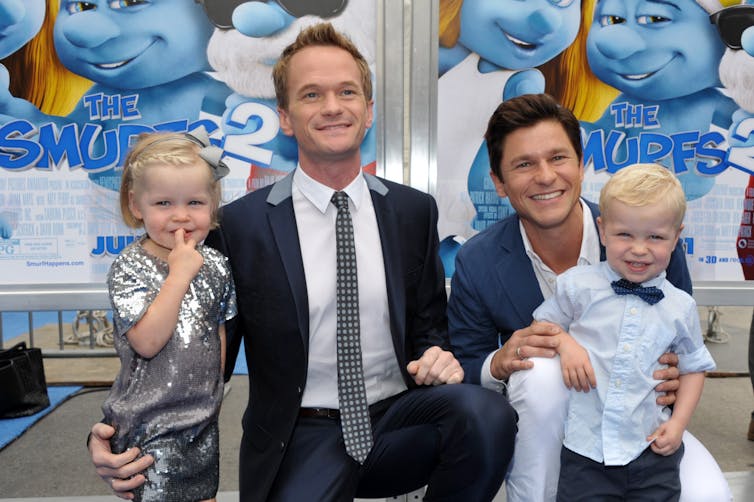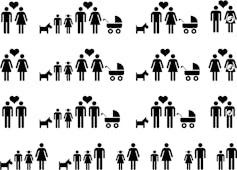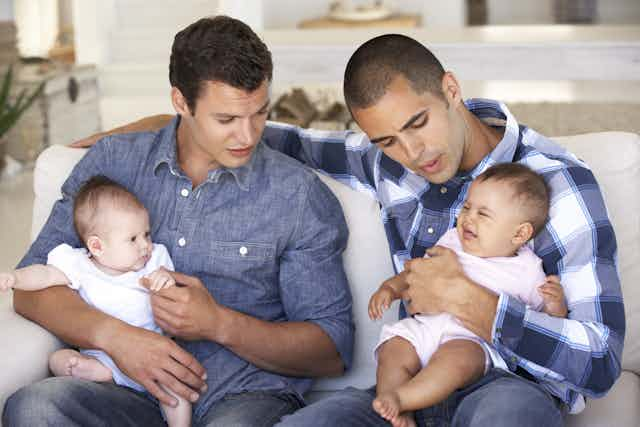Some states, including Texas, South Dakota and Alabama, have tried to defy the 2015 Supreme Court ruling that made marriage equality the law of the land. Their “religious freedom” bills allow taxpayer-funded agencies to deny qualified LGBTQ adults to foster and adopt children.
LGBTQ protection in education appears limited as well. When pressed on the question, Education Secretary Betsy DeVos is refusing to tell lawmakers whether she believes the federal government should include “sexual orientation” and “gender identity” in anti-discrimination policies.
That reminds me of how former Kentucky family court judge W. Mitchell Nance refused to hold hearings on same-sex couples’ adoptions in 2017 “as a matter of conscience.” He resigned after his state’s Judicial Conduct Commission found him guilty of misconduct.
Maybe any officials, judges and lawmakers who are alarmed by dual-dad or dual-mom households should check out the research on how gay parents differ from straight parents. So far, most of this scholarship has focused on the social, emotional and cognitive outcomes of children they raise. (Spoiler alert: These kids turn out fine.)
As a former teacher who now researches gay dads and their families, I’m studying how the growing number of men married to other men are raising their children. So far, I’m finding few differences between them and their straight peers of similar socioeconomic status – especially regarding their children’s schooling.
A growing population
Since the Census Bureau estimates – but does not count – the number of households headed by two fathers, it’s hard to track them.
Plans are taking shape for the Census Bureau to begin counting same-sex couples who share a household in 2020, although the agency won’t be counting all LGBTQ individuals.
Nevertheless, the American Community Survey, the Census Bureau’s ongoing demographic survey of approximately 3 million households, already follows same-sex parenting. It estimates that in 2017, almost 40,000 two-dad households were raising children, up from about 30,000 in 2010.

Parenting roles
How do parents in these families settle into specific roles? In short, just like heterosexual parents do.
Research suggests that affluent, white, two-father households adhere to traditional parenting roles. One is the primary breadwinner, while the other earns either less income or none at all and handles most of the caregiving and chores.
However, two-dad households can challenge the 1940s Norman Rockwell image of gendered parenting – just like heterosexual couples can.
Households with two fathers working full-time rely on day care facilities, babysitters, housekeepers and nearby relatives for support. Some of these men even take on responsibilities based on skills and strengths, rather than who fits the socially and culturally constructed mold of being more “motherly” or “fatherly.”

Community and school engagement
And that’s where the parenting of gay dads may differ from a traditional heterosexual household, as my research and the work of other scholars suggests.
While interviewing and spending time with 22 gay-fathered families living in the Northeast, I have learned that they’re apt to step up. But it depends on where dads live. Many living in more gay-friendly areas become involved as classroom parents, voluntarily assisting teachers, reading books or leading singalongs. Some take leadership roles by becoming active PTA members or organizing events that go beyond their children’s classes. In some cases, gay fathers become PTA presidents or serve on school boards.
Like all civically engaged parents, gay fathers support their local museums and libraries and enroll their kids in camps and extracurricular activities. They sometimes do additional volunteer work for social justice groups.
Dads living in less gay-friendly areas want to have more school-based presence, but concerns about their children’s and family’s safety have made it challenging.
The largest-scale survey to date was conducted in 2008 by the Gay Lesbian Straight Education Network, an organization focused on the safety of LGBTQ students in schools. That study, which included 588 LGBTQ parents, suggested that gay fathers could be more likely to be involved in school-based activities than heterosexual dads.
Aside from the simple fact that they love their children just like all parents do, Abbie Goldberg, a Clark University researcher, and her colleagues have shown that increased presence may be due, in part, to fathers’ initiatives to counter bias and assert more same-sex visibility and inclusion in schools. My current study indicates the same. Many of the men taking part have told me that being actively involved helps them preemptively counteract potential negative encounters with school personnel and other families.
Gay dads prefer schools and communities that are safe and inclusive. As my research suggests, living in a inclusive community makes them more likely to engage. Beyond that, they want lawmakers bent on barring them from fatherhood to see that two-dad families are for the most part just like any other family.

